Nakasao Komeya and the Art of the Onigiri
2024/05/30
Nakasao Komeya is a specialty rice shop nestled in the old Yagi neighborhood of Nara Prefecture’s Kashihara City. What sets this rice shop apart is the owner’s warm hospitality and knack for coming up with unique and delicious onigiri creations that are hard to find an equivalent of anywhere else. The onigiri, AKA “rice ball,” or if we are going to be honest about it, triangle-shaped rice blob, gets its distinct shape comes from the traditional technique for preparing them via repeatedly pressing the rice together between the hands and can be fairly described as a modern day staple of Japanese cuisine. An unfathomable number of these things are shipped around the country on the daily to supply the tens of thousands of stores and shops that sell to the masses who rely on them for an easy meal. Comparatively speaking, they are not only an easy & cheap food, but relatively healthy as well — types of meat, fish, seaweed, and veggies are common ingredients packed into onigiri, so their popularity is certainly not unmerited. However, I am here to report that not all onigiri are created equal, and in fact, there is a vast, salty sea of difference between the mass produced kind you find in your local convenience store and the hand-made variety the likes of which Nakasao Komeya creates for its customers with love and care.
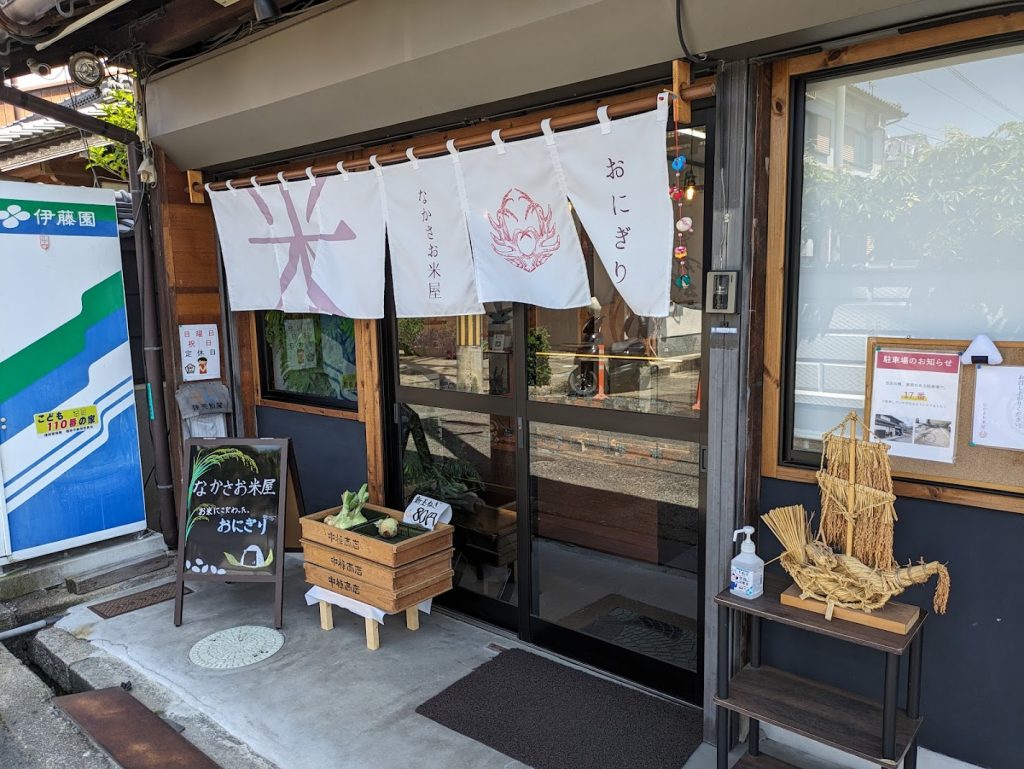
Entrance to Nakasaokomeya. A wide variety of interesting onigiri types are freshly made and available for purchase here nearly every day of the week.
I myself have been going to Nakasao’s shop for awhile now (my favorite type of onigiri is the meat & miso) and they are also often the first place that we bring guests to when we operate tours in the Kashihara area. In that time, I have been lucky to have befriended the owner of the shop, Nakasao-san, who was kind of enough to answer some questions about their business which I have translated (and rephrased in some spots for clarity) in the interview below:
Interview question 1: Where are you from originally?
Nakasao-san’s answer: Kashihara City, Nara Prefecture.
Q2: How long has Nakasao Komeya been operating as a business?
N: Nakasao Komeya has about 75 years of history as a rice dealer, and now 3 years also as an onigiri shop.
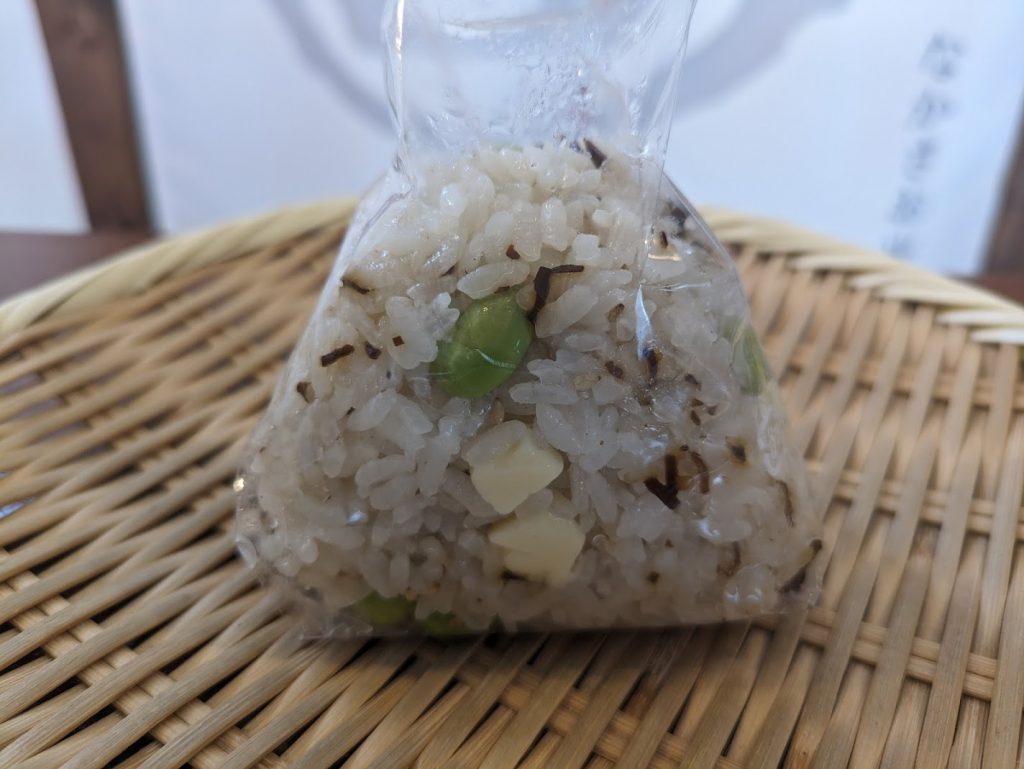
Cheese, soy beans and bits of seasoned seaweed make up this unique and delicious onigiri creation of Nakasao-san.
Q3: Why did you decide to go into the onigiri business?
N: In recent times, the amount of people who eat rice regularly [in Japan] has been decreasing due to diet and other reasons. Furthermore, the amount of traditional rice shops that sell their product directly to people from streetside shops has also decreased, which is sad to consider. I started to think about how I could get people to eat the Japanese soul food of rice, and the answer I came up with was to make and sell onigiri, a product that all kinds of people — from children to adults — can enjoy. Maybe in this way I could increase the amount of people coming to the shop?

Freshly prepared onigiri at Nakasao Komeya.
Q4: What are the most popular onigiri at your shop?
N:Fried egg omelet, meat & miso, and clam are all popular.
Q5: Are there any types of onigiri that you sell that are unique to your store?
N: Nikutama (fried egg containing strips of seasoned beef at the center of the rice).
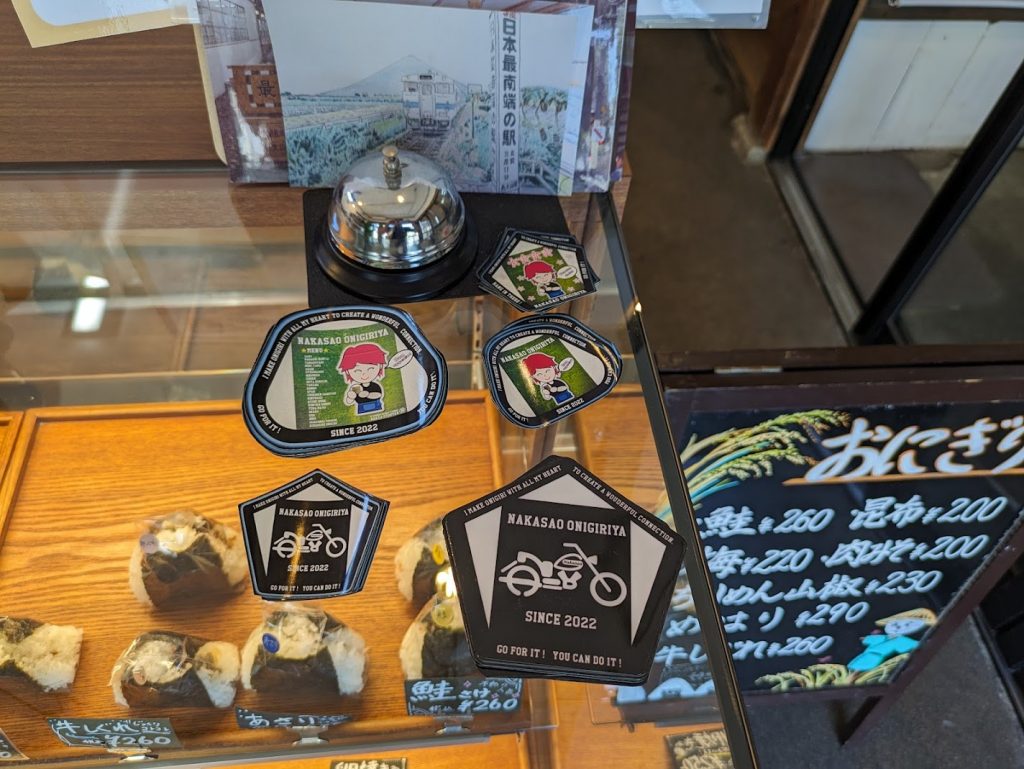
Encouraging stickers that are freely given out to customers of the shop (Nakasao-san is a motorcycle enthusiast).
Q6: Do you have any recommended onigiri for folks who might be newbies to the onigiri experience?
N: Comparatively speaking, our seasoned beef, meat & miso, and salmon onigiri should all be easy to eat, I think?
Q7: Do you sell anything else besides onigiri?
N: We also still sell rice. In the future I would like to also sell nori [seaweed] and tsukudani [foods cooked and preserved in a mix of soy sauce and rice wine].
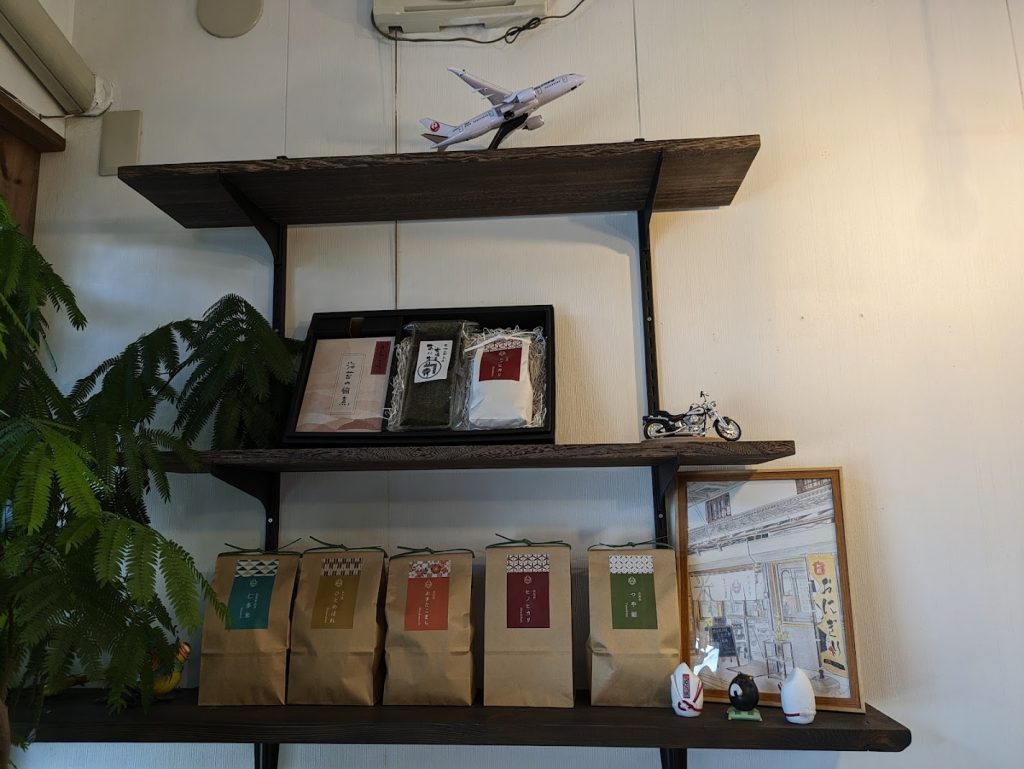
Different types of rice available for purchase at the shop.
Q8: What do you like about Kashihara City & the southern Yamato (Nara) area?
N: As I was born and raised in Kashihara City, I can say that it is located in a location with convenient transportation access to the surrounding areas of Osaka, Kyoto, Mie, and Wakayama. The street on which the storefront of Nakasao Komeya is located is part of an historic Ise Kaido road [old routes that lead to the Ise Grand Shrine in Mie Prefecture], nearby Imai-cho Town features rows of old traditional-style townhouses, and the ancient Fujiwara-kyo Capital Ruins Site site to the east has different types of flowers in bloom throughout the year, making Kashihara a perfect place to enjoy taking a stroll through.
The neighboring village of Asuka also has a historical charm that I would like people to experience as well.
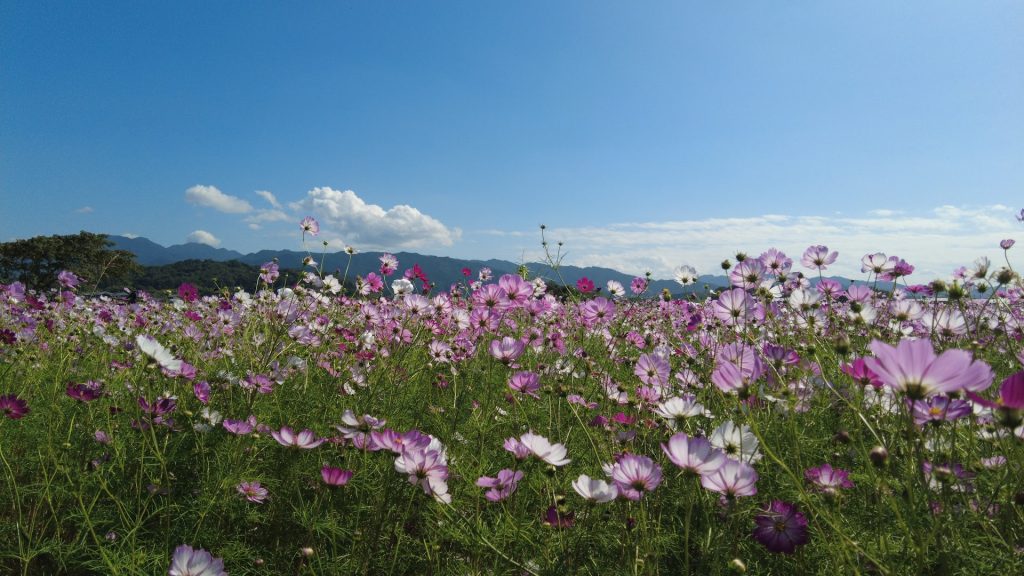
Fall cosmos flowers at the Fujiwara-kyo Capital Ruins site; a great place to bring some onigiri for lunch while you enjoy the beautiful view.
Q9: Is there anything you would like to say to customers of Nakasao Komeya?
N: While factory made onigiri may be delicious, they can’t really be felt beyond that level. It is my goal to create handmade onigiri that when eaten, may remind my guests of the warm taste of onigiri made by their mother when they were a child.
Thank you very much to Nakasao-san for their kind cooperation in answering the above questions! I feel it must also be noted that the owner is an exceptionally kind person who has always greeted me with warmth and seems to genuinely care about their work and the community. They have also said that the number of foreign guests has been increasing, so for those who are worried about the Japanese language being a barrier to trying the delicious onigiri and feeling the hospitality of the shop, don’t be! Nakasao-san will happily do their best to explain onigiri to all customers (also, smartphone translation is your friend), so feel free to stop by the shop if you find yourself in the area — you will also be supporting a locally owned traditional business, to boot. Maybe make a day of checking out the local spots (Imai-cho, Fujiwara-kyo, Asuka Village) that Nakasao-san recommended above and have their onigiri for lunch or a snack?
As mentioned previously, Nakasao Komeya’s storefront is located in an area of Kashihara known as “Yagi-cho,” an old townscape that was once an important part of this regions thriving network of trade routes. It is only about a 10 minute walk from both Yamato-yagi Station (Kintetsu Line) and Unebi Station (JR Line). Nakasao-san seems to always be trying new onigiri creations and the menu often changes a little from day to day, so for for updated information (including hours, updated products, photos, etc.) please check out the official Instagram of the shop here.
Hours: currently, the shop is only regularly closed on Sundays. If you go after lunch on days of operation there is a good chance the available selection of onigiri will have decreased considerably, so if possible, try to arrive earlier in the day.

01
FIND YOUR FAVORITE
TRIP ON OUR WEBSITE.
SEND US AN INQUIRY.

02
PERSONALIZE THE TRIP
TO YOUR INTERESTS
WITH OUR CONSULTANT.

03
20% DEPOSIT TO CONFIRM.
BALANCE PRIOR TO ARRIVAL.
PAYMENT BY CC OR TT.

04
WE WILL
MEET YOU
AT THE AIRPORT.

05
DISCOVER THE
TREASURES!